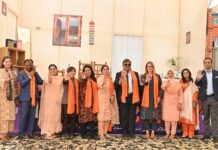Areas along a country’s international border often face instability, chaos and uncertainty if there is a lack of peace in the country that happens to be on the other side of the border. Pakistan’s tribal districts, while being the first line of defence against threats emanating from Afghanistan, have been the first receivers of destruction.
The seven agencies — Bajaur, Mohmand, Khyber, Orakzai, Kurram, North and South Waziristan — were merged in Khyber Pakhtunkhwa (KP) under the 25th Amendment on May 31, 2018, marking the end to the draconian Frontier Crimes Regulation (FCR). However, the fate of the areas has not seen any meaningful improvement in the last four years.
A population of over five million in these areas still does not have a university. Many are forced to migrate to the other cities for higher education, but not all can do so for various reasons, and this severely limits their ability to contribute to the larger national good. Besides, a few cadet colleges in the region were established as part of the rehabilitation effort, but the women of tribal areas do not have any option even today.
In 2016, Fata University was set up in Darra Adam Khel, which is too far away from, say, Miran Shah or Wana, to serve the purpose. In the last over seven decades, Pakistan has failed to provide a single institution of higher education for those living in the tribal areas. They represent the first line of defence and have rendered sacrifices without getting even basic facilities in return. Why?
The development of tribal regions in terms of social services should be prioritised by national and provincial governments on an emergency basis. There can be no doubt that the citizens of tribal areas deserve every opportunity that people in other parts of Pakistan have.
SUMMAN ZIA
RAWALPINDI





















